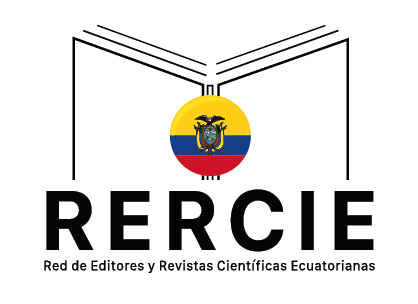Selección de los dientes en rehabilitación oral.
DOI:
https://doi.org/10.36097/rsan.v1i22.638Palabras clave:
métodos para selección de dientes, rehabilitación oral, estética dental, forma de los dientesResumen
En la actualidad la Odontología ha generado gran interés en las personas ya que a través de tratamientos estéticos se puede mejorar evidentemente la apariencia física, la autoestima y relaciones interpersonales. Los dientes por su forma y color son la principal determinante de la apariencia y la estética dental, por ello el Odontólogo rehabilitador es el responsable de seleccionar adecuadamente los dientes ofreciendo un tratamiento individualizado por el aspecto de cada persona, sus características físicas y también su personalidad. El objetivo de esta investigación es presentar, analizar y valorar los diferentes métodos que existen que puedan ser útiles para la selección de los dientes en tratamientos de rehabilitación y estética dental en los diversos casos que se puedan presentar en la consulta diaria, a través de una revisión sistemática del tema con el criterio y análisis del experto.
Citas
AL-Kaisy, N., y Garib, B. T., (2015). Selecting maxillary anterior tooth width by measuring certain facial dimensions in the Kurdish population. The Journal of Prosthetic Dentistry.
AL-Omiri, M., Sghaireen, M., Al-Qudah, A., Abu Hammada, O., Lynch, C., Lynch, E., (2014). Relationship between impacts of removable prosthodontic rehabilitation on daily living, satisfaction and personality profiles. Journal of Dentistry, 42, 366-372,
Alvi, H. A., Agrawal, N. K., Chandra, S., & Rastogi, M., (1986). Comparative analysis of personality characteristics of dental patients in relation to their natural and artificial dentitions. The Jorunal of Prosthetic Dentistry,56 (3), 369-379.
Baker, P., Morris, W. J., Lefebvre, A., Price, G., & Looney, S., (2010). Relationship of denture cast measurements to width of maxillary anterior teeth. The Journal of Prosthetic Dentistry, 105, 44-50,
Berry, F. H. (1905). Is the theory of temperaments the foundation of the study of prosthetic art. Dent Mag, 1(405), 6.
Bhuvaneswaran, M. (2010). Principles of smile desings. Journal of conservative Dentistry, 225-232.
Bidra, A., Uribe, F., Taylor, T., Agar, J., Rungruanganunt, P., & Neace, W., (2009). The relationship of facial anatomic landmarks with midlines of the face and mouth, The Journal of Prosthetic Dentistry. 102 (2), 94-103.
Cesario, V.A. & Latta, G. H. (1984). Relationship between the mesiodistal width of the maxillary central incisor and interpupillary distance. The Journal of Prosthetic Dentistry, 52(5), 641-643
Cornella, J., ¿Qué es el temperamento? (2010). An Pediatr Contin. , 8(5), 231-6.
Cornella, J. (2010). ¿Qué es el temperamento? Anales de la Pediatria Continuada, Vol. 8 (5). Recuperado de http://www.apcontinuada.com/es/que-es-el-temperamento/articulo/80000573/
Coachman, C., y Calamita, M., (2012). Virtual Esthetic Smile Desings, Journal of Cosmetic Dentristy, 29 (4), 112-116.
Diaz, D. G., Johnston, W. M., & Wee, A. (2008). Estimating the color of maxillary central incisors based on age and gender. The Jorunal of Prosthetic Dentistry, 100(2), 93-98.
Fradeani, M. (2012). La Rehabilitación Estética en Prostodoncia Fija. Análisis Estético. Editorial Quintessence. Barcelona.
Furtado, G., Furtado, A., El Haje, O., Butignon, L., Pesqueira, A., & Paranhos L., (2014). Relationship between the morphology of the maxillary central incisor and horizontal and vertical measurements of the face. Indian Journal Dent Res, 25, 178-183.
García, E. J., Momose de Andrade, T., Mongruel Gomes, O., Gomes, J. C., (2009). Aplicación clínica de los parámetros estéticos en odontología restauradora. Acta odontológica Venezolana, 47 (1), 1-8.
Goncalves, L. Gómes, V., De Lima, L. y Monterio, S. (2009). Correlation Between the indivisual and the combied width of tehe six maxillary anterior teeth. Journal Esthetic and Restorative Dentistry, 21 (3), 182-91.
Gupta, R. N. (2014). Esthetics In Complete Dentures. Indian Journal of Dental Sciences, 98-102.
Hasanreisoglu, U., Berksun, S., Aras, K., & Arslan, I., (2005). An analysis of maxillary anterior teeth: Facial and dental proportions. Journal of Prosthetic dentristy, 94 (6), 530-538.
Isa, Z., Farouq Tawfiq, O., Mohd Noor, N., Mohd Iqbal, M., & Mohd Rijal, O., (2010). Regression methods to investigate the relationship between facial measurements and widths of the maxillary anterior teeth. The Jorunal of Prosthetic Dentistry, 103 (3), 182, 188.
Koralakunte, P., & Budihal, D., (2012). A clinical study to evaluate the correlation between maxillary central incisor tooth form and face form in an Indian population. Journal of Oral Science, 54(3), 273-278.
Lombardi, R., (1973). The principles of visual perception and their clinical application to denture esthetics. The Journal of Prosthetic Dentristy, 29(4), 358-382.
Lucas, L., Gennari, F., Goiato, M., Santos, D., Moreno, D., & A Falcón R, (2010). Estética en prótesis removible. Revista Cubana de Estomatología, 47(2), 224-235.
Mavroskoufis, F. & Ritchie, GM, (1981). Nasal Width and incisive papilla as guides for the selection and arrangement of maxillary anterior teeth. Journal Prosthet Dent, 45(6) 592-7.
Palmeirão Carrilho, E. V. & Paula, A., (2007). Reabilitações Estéticas Complexas Baseadas na Proporção Aúrea. Revista Portuguesa de Estomatología, Medicina Dentária e Cirurgia Maxilofacial, 48(1), 43-53.
Paolucci, B., Calamita, M., Coachman, C., Gurel, G., Shayder, A., & Hallawells, P. (2013). Il visagismo, l’arte di comporre i denti. Quintessenza Odontotecnica, 5, 28-41.
Paolucci, B., Calamita, M., Coachman, C., Gurel, G., Shayder, A., Hallawells, P., (2012). Visagism: The Art of Dental Composition. QTD. Recuperado el 2 de diciembre 2017 de digitalsmiledesign.com/static/.../_Paolucci_Visagism_QDT.pd
Sghaireen, M., Board, J. y AL-Omiri, (2015). Relationship between impact of maxillary anterior fixed prosthodontic rehabilitation on daily living, satisfaction, and personality profiles. The Journal of Prosthetic Dentistry, 1-7
Sinavarat, P., Anunmana, C., & Hossain S. (2013). The relationship of maxillary canines to the facial anatomical landmarks in a group of Thai people. Journal Adv Prosthodont, 5, 369-373. Recuperado de http://www.sciencedirect.com/science/article/pii/S0022391315004060
Vasantha Kumar, M., Ahila, S. C., & Suganya, S. (2011). The Science of Anterior Teeth Selection for a Completely Edentulous Patient: A Literature Review. The Journal of Indian Prosthodontic Society, 11(1), 7-13. Recuperado el 12 de enero del 2016 de https://www.ncbi.nlm.nih.gov/pmc/articles/PMC3095741/
Waliszewski, M., (2005). Restoring dentate appearance: A literature review for modern complete denture esthetics. The Jorunal of Prosthetic Dentistry, 93 (4), 386-394. Recuperado el 13 de marzo del 2016 de http://www.sciencedirect.com/science/article/pii/S0022391305000375
Weber., B, Fuentes, R, García, N., & Cantín, M., (2014). Relaciones de Forma y Proporción del Incisivo Central Maxilar con Medidas Faciales, línea mediana Dentaria y Facial en Adultos. Int. J. Morphol., 1101-1107. Recuperado el 15 de abril del 2016 de http://www.scielo.cl/scielo.php?script=sci_arttext&pid=S0717-95022014000300057
Descargas
Archivos adicionales
Publicado
Cómo citar
Número
Sección
Licencia
 Esta obra está bajo una Licencia Creative Commons Atribución-NoComercial-SinDerivadas 4.0 Internacional (CC BY-NC-ND 4.0).
Esta obra está bajo una Licencia Creative Commons Atribución-NoComercial-SinDerivadas 4.0 Internacional (CC BY-NC-ND 4.0).
















